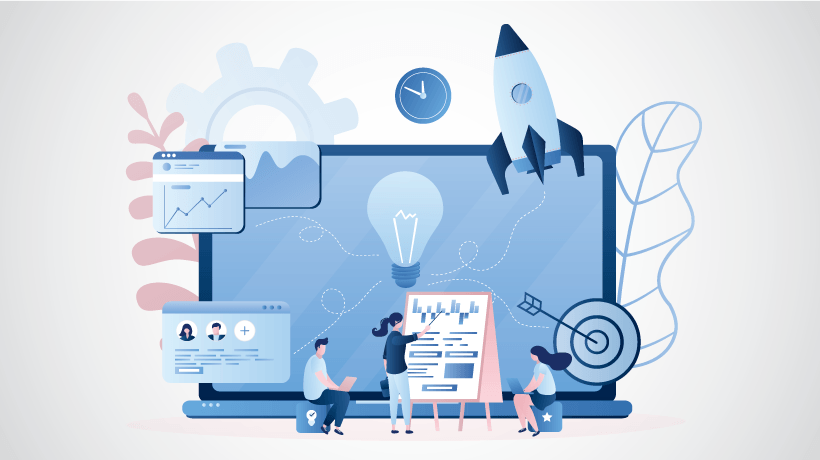Serious Games For Employee Learning
You might not spend sleepless nights playing a video game, as some people do. But, if you enjoy the random mobile puzzle game every so often, you're a casual gamer. This means there's a high chance you'll gain in-depth knowledge of complicated principles, seamlessly, by engaging with a serious game.
People play games for a variety of reasons:
- To blow off steam
- To relax
- To learn new skills
- To just have fun
Still, games are used by companies worldwide with another objective: to educate their employees. The purpose of game-based learning is to challenge, entertain, and educate. Implementing gamification and serious games into your company's learning culture is the first step toward building a successful training strategy.
The main reason GBL works so well is it's a fun factor. Having fun while learning is the best way to help learners grasp, retain, and apply complex concepts. Virtual simulations, serious games, and augmented reality enable employees to make mistakes. All this while removing the consequences of their actions, which in real life would have a negative impact on their job and your business. With serious games, employees can learn important skills and gain specific knowledge for dealing with real-world workplace issues.
Following are our 5 top tips for implementing serious games within your company's Learning and Development strategies:
1. Focus On Balancing Learning And Entertainment
Yes, it's a game and it should be fun. As such, the visuals should be eye-catching and the gameplay entertaining. But don't forget the real purpose of the game: to provide valuable learning content for employees’ personal and professional growth. If the game is too visually distracting, learners might lose focus and end up skimming over the learning material. If the game is too centered on teaching, employees might find it overwhelming and lose interest fast. So, balancing employee learning needs, your expectations, and gameplay, should be first on your checklist when implementing serious games.
2. Immerse Employees In True-To-Life Work Environments
The beauty of games is their ability to transport the player into another world. With employee training, it makes sense to create environments that are as close as possible to real workplace settings. Simulating the actual workplace will create a deeper connection between the learner and the skills and knowledge they need to acquire.
For example, if you're providing a sales training game, employees will be able to tackle customer interactions in a real-life setting. This gives staff the opportunity to deal with various sales issues without the fear of losing the customer due to mistakes. It puts the employee in the driver's seat and allows them to figure out the best tactic for convincing a reluctant customer to buy your products.
3. Provide Constructive Feedback
Feedback is only ever efficient when delivered in a constructive manner. In-game feedback is effective because it pertains to the specific issue players are facing at an exact point in the game. You can include helpful pop-up instructions, reward points, badges, and keep score of employee successes over each game level. This will show them how much they have progressed while giving them a gentle nudge to surpass their current limitations.
4. Encourage Friendly Competition
Leveraging competition can increase player engagement with the game. Employees can compete with themselves to beat their high scores by retaking the same level over and over again. At the same time, employees can compete against each other vying for recognition within the company or earning extra rewards. Friendly competition raises the fun factor, the stakes, and yields better results.
5. Challenge Employees With Increasingly Difficult Game Levels
Just because it's a game, doesn't mean it should be easy. A linear, easy game, can quickly become boring to players. Encourage game level completion by slightly upping the stakes with each new challenge. The game needs to be general enough to appeal to a wide range of players. Still, each level should be specific to the player's capabilities and deliver the right amount of new information.
Serious Games With Serious Results
Implementing game-based learning to educate employees can bring serious benefits for your company. Learning through play increases productivity, keeps employees relaxed, and helps them feel confident in their newly acquired skills. Serious game implementation might not be easy to do on your own. But, working with the right professionals to create a game that fits your business needs and employee learning goals is your best starting point. Here's a successful serious game example created by our team that increased staff on-the-job knowledge and skills. If you're looking to create a customized serious game for your company, download the eBook Serious Games Development In The Modern Workplace by Designing Digitally.








